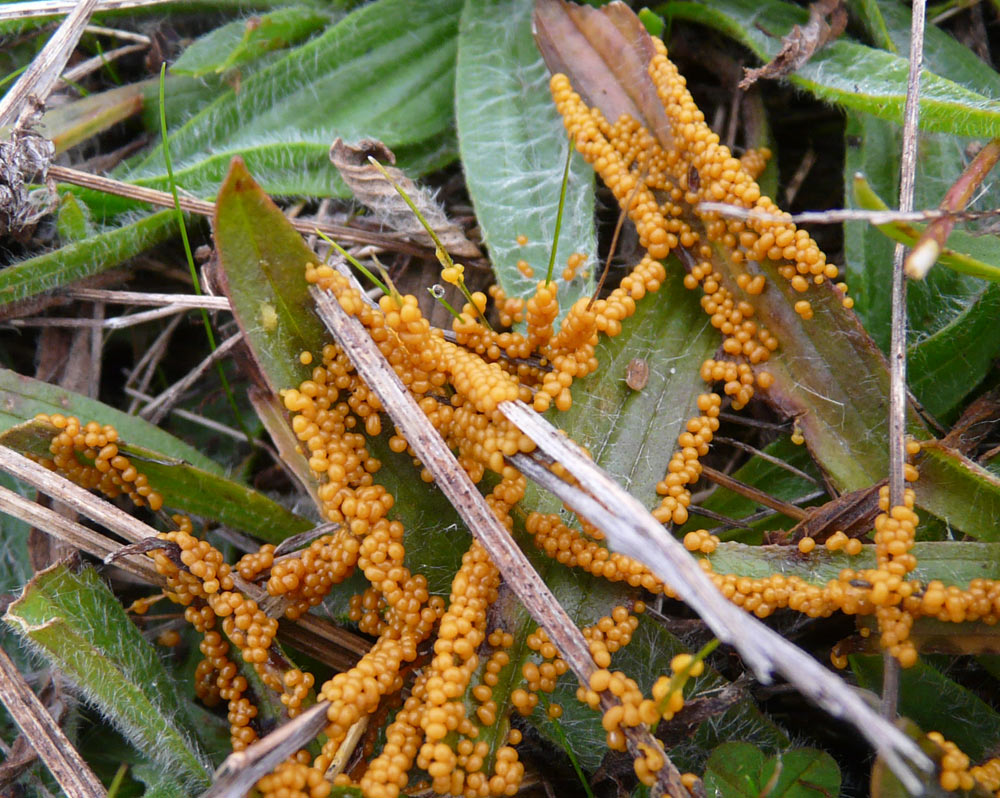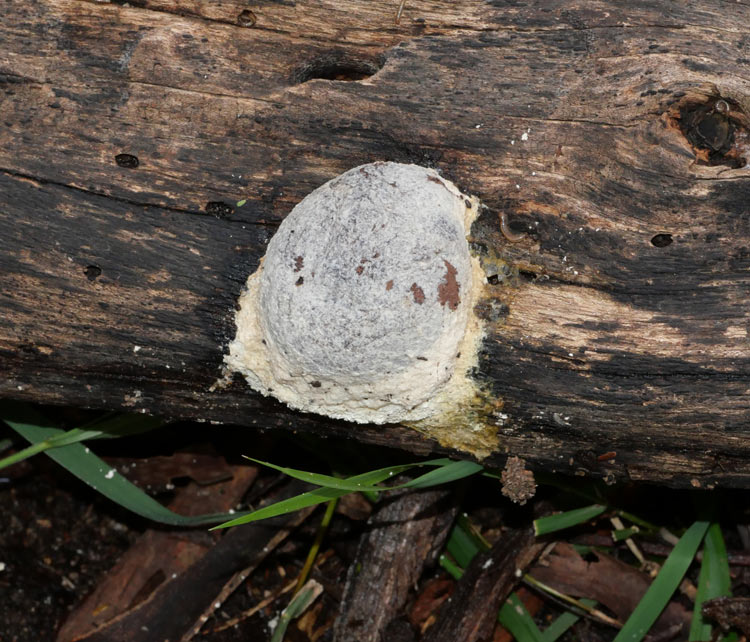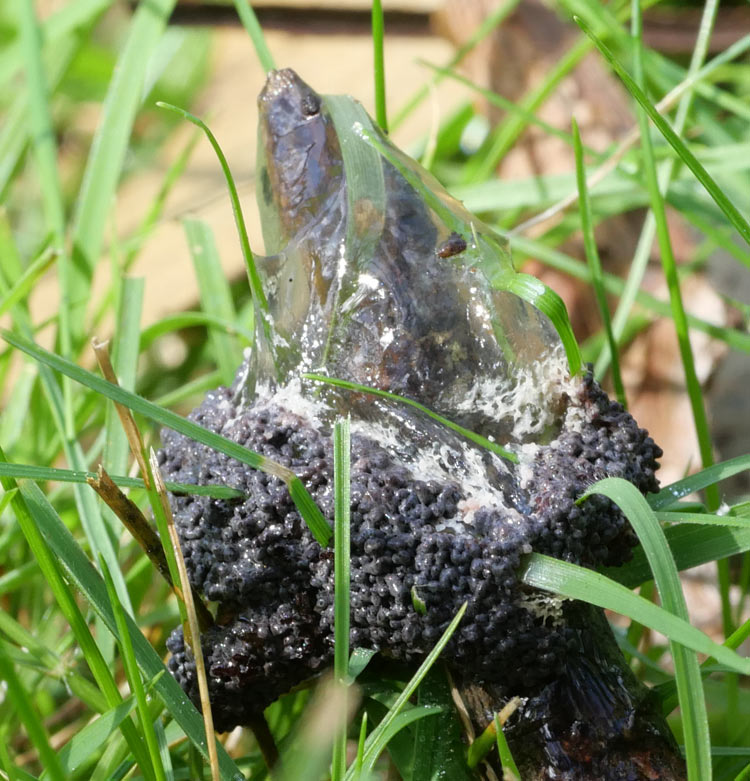
Plasmodial Slime Moulds are the only organisms pictured on this site that are not plants, animals or fungi. Other types of organisms are certainly present but would require a microscope to see individually.

A plasmodia is a single large cell with hundreds to billions of nuclei: this is just one phase of the life cycle of a slime mould. A plasmodia can move through the soil or across decaying organic matter, by extending itself in one place and contracting in another. As it goes it consumes other organisms such as bacteria, fungi, algae and other slime moulds. When conditions are right a plasmodia will transform into a spore-producing phase, called a fruiting body. The photographs on this page are all of fruiting bodies.
Spores "germinate" to produce two to four amoebas. An amoeba is also a single cell but has just one nucleus and is microscopic. They feed on other microorganisms like bacteria by engulfing them, and multiply by binary division. There can be thousands in one gram of soil.
"Mating" in slime moulds occurs when two amoebas join together and their nuclei fuse. This zygote feeds and grows into a plasmodium, it's nucleus dividing many times in the process.
There are variations in the above life cycle, and in addition both amoebas and plasmodia can have dormant states if conditions are too harsh for them to grow.
Slime moulds need wet and humid conditions to grow and the visible stage of their life cycle is short, so they are not seen very often in Woodlands Historic Park.
